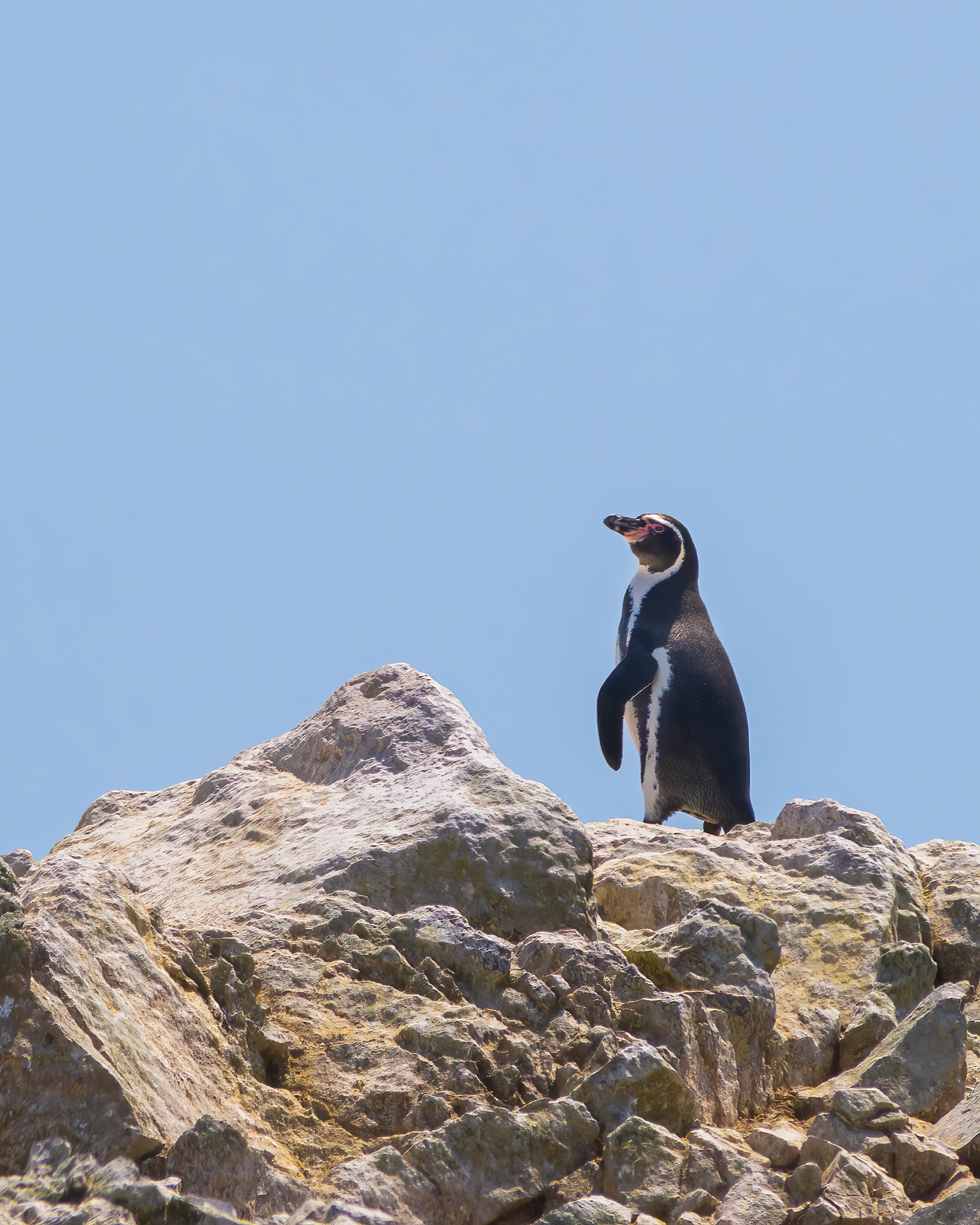Penguins? In Peru!?
You bet. Except here they’re called pingüinos (pronounced ‘ping-gween-ohs’) which is frankly adorable and I think we should change the English name to pingüinos as well. I will exclusively be referring to them as pingüinos from now on.
This is a Humboldt Pingüino from the Islas Ballestas – a group of islands off the Peruvian coast, around three hours south of Lima.
Now, Peru is in the tropics, and as a general rule, pingüinos aren’t a fan of tropical environments. You’re not going to find any sunbathing on the beaches of Far North Queensland, despite these pingüinos being photographed at the same latitude as the Great Barrier Reef! In fact, there’s only one pingüino that’s found further north, but I haven’t been to the Galápagos yet, so you’ll have to wait to hear about that pingüino some other time.
So why do Humboldt Pingüinos venture so far north? Well, that has to do with ocean dynamics.
Humboldt Pingüinos are found off the coast of Peru because of The Humboldt Current – a cold ocean current that flows along the west coast of South America, stretching from southern Chile to northern Peru. Sea surface temperatures in this region drop as low as 16°C, almost ten degrees colder than typical ocean temperatures at this latitude. These cool temperatures are the result of intense upwelling (the movement of cold water from the depths of the ocean to the surface). This upwelling also brings nutrients with it, resulting in a highly abundant ecosystem surrounding the Humboldt Current. This region accounts for around 20% of the world’s total marine fish catch, so it’s no wonder that the pingüinos are drawn here too!
However, when humans and pingüinos are competing for fish, the pingüinos lose out every time – and as usual, climate change and capitalism are making things considerably worse.

A few weeks ago, I shared a post about the impacts of climate oscillations like El Niño. Interestingly, El Niño is also a key driver in the productivity of the region around the Humboldt Current. In colder La Niña years, the nutrient-rich Humboldt Current thrives, and fish supplies are bountiful. But in warmer El Niño years, the ecosystem stagnates, often resulting in crashes in global fish supplies.
As ocean temperatures continue to rise steadily due to climate change, and global fish consumption also continues to grow, increasing pressure is put on ecosystems such as those in the Humboldt Current.
Humboldt Pingüino populations are decreasing, and they are currently classed as Vulnerable by the IUCN. In El Niño years, massive mortality rates are reported due to competition with humans for the dwindling fish supplies.
Last year, Peru established its first Marine Protected Area – the 62,000 square kilometre Nazca Ridge National Reserve. Almost comically however, the ‘protected area’ still allows industrial fishing up to depths of 1,000 metres, rendering the reserve almost meaningless.
Much more needs to be done to preserve these important ecosystems, but as with most environmental issues, it’s profit over pingüinos in Peru.
–
Humboldt Pingüinos (Spheniscus humboldti), Islas Ballestas, Peru


